
The Prolonged Impact of UXO
but others haven’t been so lucky. Over 110 people have died from unexploded ordinance (UXO) dumped in the North Sea since 1945.A study reported in Marine Technology News this week investigated another risk such munitions pose. The south-western Baltic Sea has about 3,000 kilograms of dissolved toxic chemicals released from unexploded ordnance, according to the study by the GEOMAR Helmholtz Centre for Ocean Research Kiel. Unexploded ordnance contains toxic substances such as TNT (2,4,6-trinitrotoluene), RDX (1,3,5-trinitro-1,3,5-triazine), and DNB (1,3-dinitrobenzene), which are released into the
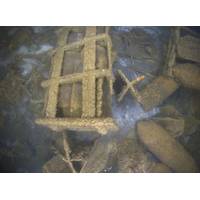
Unexploded Ordnance Could Contaminate Baltic Sea for 800 Years
The south-western Baltic Sea has about 3,000 kilograms of dissolved toxic chemicals released from unexploded ordnance, according to a new study by the GEOMAR Helmholtz Centre for Ocean Research Kiel.Most of this originates from deliberate dumping after the end of the Second World War. These dumping sites are well documented, with much of the ordnance lying visibly on the seabed, allowing it to be mapped and documented using underwater robots.The study highlights the long-term environmental contamination caused by unexploded ordnance in the south-western Baltic Sea.“Unexploded ordnance contains
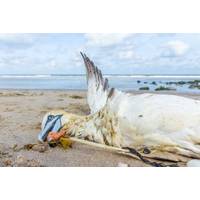
Plastic Pollution Threatens Birds Far Out at Sea
pollution poses a problem for seabirds worldwide, even outside of high exposure areas.Plastic pollution is an issueSeabirds often swallow plastic by accident, mistaking it for their food. They also ingest plastic that has already been eaten by their prey.This can lead to injury, poisoning from toxic chemicals that leach from the plastic and starvation as plastic fills up their stomach. Research from 2014 found that more than 60% of flesh-footed shearwater fledglings surpass international targets for plastic ingestion by seabirds. Worryingly, 16% of fledglings failed these targets after just one feeding

MTR100: Deep-sea Mining May Prove Pivotal in the Climate Change Discussion
in 2023. IM hopes to reach full-scale production by the end of 2024.Its bio-extraction process offers a one-of-a-kind technique, as well. The processing technology will extract minerals from the nodules using naturally occurring bacteria to dissolve the rock into solution, eliminating the use of toxic chemicals and tailings, and lowering the energy footprint. This process is in the same phase as the robotics, with all technology currently lab based. “We have plans to construct a pilot plant facility in 2023, to develop the necessary infrastructure required with scaling of the microbial processes
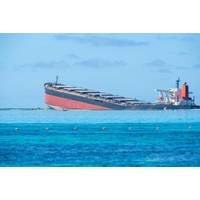
How Coral, Mangroves and Seagrass Could be Affected by the Mauritius Oil Spill
, but this is just the beginning.As the oil sinks, it can cover more of the reef. Corals depend on sunlight for sustenance but they also eat floating microorganisms called zooplankton. Aside from clouding the water and reducing sunlight, oil pollution has been shown to kill zooplankton, while the toxic chemicals in crude oil weaken the ability of corals to photosynthesise. Deep water corals coated in oil experienced tissue swelling and ruptures.In the years following an oil spill, growth and reproduction is reduced, leaving less live coral on reefs. In spite of this, coral reefs are resilient ecosystems

The Benefits of Sustainable Marine Lumber
of engineers and others specifying materials for marina and waterfront projects. It is especially favored for its high strength and durability, as well as for being pest and marine borer resistant and almost completely immune to rot. As a result, it requires minimal maintenance and poses no risk of toxic chemicals entering the water. This is in direct contrast to soft woods like pine which are prone to rot, decay, mold, algae and fungi growth and do not withstand insect attacks. As such, these soft woods require a lot of maintenance (regular sealing) and still are known to splinter overtime.As for composites
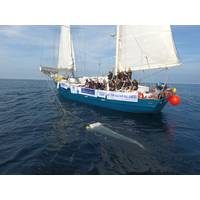
ABB Marine Software Supports Ocean Research
are dumped into the world’s oceans every single minute,” said Thomas van Thiel, By the Ocean we Unite. “These materials are fragmenting into ever smaller particles, damaging the marine environment and marine life, and entering the food chain. Plastics also act as sponges to other toxic chemicals already in the seas, concentrating areas of pollution. Removing plastics from the oceans is not currently feasible, but we must identify sources and effects because prevention is not only the better option, but cheaper than cleaning the oceans.” During the 17-day voyage, the profession
Oil-hungry Bacteria Could Clean Up Next Big Oil Spill
also identified the bacteria that work best at different depths. Oceanospirillales, for example, degraded alkanes in the deepwater oil plume, whereas Rhodospiralles and Cycloclasticus were responsible for degrading polycyclic aromatic hydrocarbons (PAHs), which are recognised as some of the most toxic chemicals in oil. Dr Gutierrez said, “Following an oil spill, dispersants are commonly used to break up the oil into very small droplets, making it easier for the bacteria to break it down. “Our findings show that some of the bacteria that responded to the spill in the Gulf are also
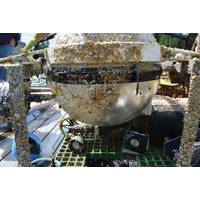
Biofouling Foiled: UV Light Harnessed for Biofouling Control
readings accurate and camera footage clear. Without biofouling control to maintain sensors and camera lenses, ocean observatories yield information of diminishing reliability over time. Current antifouling methods have substantial drawbacks. Those encountering biofouling must choose between using toxic chemicals which harm the waters they are trying to monitor, and methods of limited efficacy, such as mechanical wipers and copper plating. Vulnerable to malfunction and fouling themselves, mechanical wipers are also unsuitable for sensitive lenses and surfaces with complex contours. Copper has a limited


 February 2025
February 2025





